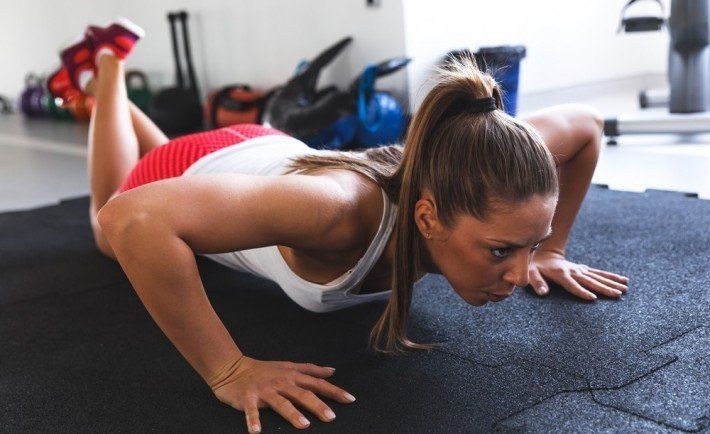Welcome to the world of warm-up exercises, where you’ll uncover the numerous benefits that can transform your training experience. Warm-up is a crucial phase that prepares your body both psychologically and physically for the main training ahead. In this article, we will delve into the nine amazing advantages of warm-up, ranging from increased blood flow and metabolism to improved muscle elasticity and reduced muscle tension.
Warm-up is about a sequence of exercise drills to prepare the athlete both psychologically and physically. It precedes the main training which is a more intense and demanding procedure.
The 9 Benefits of Warm-Up
- Increase in blood flow and metabolism
- Increase in body temperature
- Increased oxygen intake because of the gradual increase in the heart rate
- Optimized ability to perform
- Increased muscle elasticity while the resistance of the connective tissue is decreased
- The transmission of nerve impulses is conducted rapidly
- Reduced muscle tension
- Willingness to exercise is intensified
- The body adapts to harsh weather conditions more easily
Importance of Duration and Intensity
Moreover, the chances of an injury are reduced considerably and muscle efficiency is enhanced since faster and more intense muscle contraction is achieved. Aerobic capacity is boosted, muscle coordination is improved, the body adapts to weather conditions and there is a positive attitude towards exercising.
It has been observed that through warming up our body temperature is likely to increase up to 2C degrees. For this reason, it is necessary that warm-up should not exhaust the athlete. The body temperature must not fall, a fact which occurs very often when we take a break for water or static stretching.
General warm-up vs. special warm-up
General warm-up involves triggering the major muscle groups to increase blood flow and prepare the body for physical activity. On the other hand, special warm-up focuses on executing preparatory exercises that mimic the movements to come, fully preparing the areas of your body that will be engaged the most during the main training session.
Factors influencing the duration
Its duration depends on various factors. The most important ones are as follows:
- time
- type of training
- age
- level of the athlete’s physical condition and
- weather conditions
The role of sweating as an indication
While there isn’t a specific time frame for warming up, sweating can be a helpful indication that your body is prepared for the next stage. Sweating indicates an increase in body temperature, a sign that your warm-up has effectively elevated your core temperature.
Gradual Increase in Intensity
Gradually increasing the intensity of your warm-up is crucial to prevent injuries and minimize strain on your joints, muscles, and vascular system. According to sports coach Alison Glestein, starting at a lower intensity and gradually ramping up the intensity level will help prepare your body for the demands of your training session.
Injury prevention and joint/muscle strain
By gradually increasing the intensity, you allow your body to adapt to the demands of the upcoming workout, reducing the risk of injuries and minimizing the strain on your joints and muscles. This approach ensures a safer and more effective warm-up routine.
Maximizing the benefits of warming up
Properly matching the intensity and duration of your warm-up will help you maximize the benefits. Finding the right balance will optimize your performance, enhance your flexibility, and improve your overall training experience.
The Role of Stretching
Stretching is an integral part of warm-up exercises, but it’s important to understand the appropriate type and timing of stretching to reap the maximum benefits.
Appropriate type and timing of stretching
Stretching should be performed during the warm-up, focusing on dynamic stretches that engage and prepare the muscles for movement. Static stretching, on the other hand, is best reserved for post-workout cooldowns to improve flexibility and prevent muscle tightness. To learn more about different stretching techniques, check out our article on Types of Stretching: A Guide to Stretching Techniques.
Impact of wrong stretching on performance
Performing stretching exercises incorrectly or at the wrong time can harm your performance. Improper stretching techniques can lead to decreased muscle efficiency and suboptimal performance during your training session.
Caution when stretching without warm-up
Stretching without properly warming up your muscles and joints can increase the risk of injuries. Cold muscles and joints are less pliable, making them more susceptible to strains and sprains. It’s important to prioritize warm-up exercises before engaging in any stretching routine.
Additional Techniques: Massage and Stimulation
Incorporating additional techniques like massage and stimulation can further enhance the benefits of your routine.
The role of massage in relaxation and neuromuscular function
Massage techniques, such as myofascial release or sports massage, can help relax hypertonic areas and improve neuromuscular function. By releasing tension and promoting relaxation, massages contribute to the overall effectiveness.
Stimulating the nervous system and improving blood circulation
Certain techniques, like stimulating the nervous system and improving blood circulation, can have positive effects on your warm-up. These techniques can enhance your body’s readiness for exercise and optimize its overall functioning. Keep in mind that there are different massage techniques such as the myofascial one or sports massage, which are implemented before every training and help hypertonic areas relax. As a result, they contribute to the proper function of the neuromuscular system.
The importance of expert guidance in warm-up
It’s crucial to seek expert guidance when incorporating additional techniques into your warm-up routine. Working with a trained professional ensures that you perform the techniques correctly and avoid any potential adverse effects.
Warm-Up for Everyone
Warm-up exercises are not exclusive to professional athletes. They are essential for individuals of all ages, body types, and fitness levels. Regardless of your age or fitness level, warm-up exercises should be incorporated into your routine. They help prepare your body for physical activity, improve performance, and reduce the risk of injuries. Warm-up exercises can benefit everyone, from beginners to seasoned athletes.
Looking for comfortable and stylish attire for your warm-up or cooldown? Check out our exclusive range of hoodies and T-shirts with beautiful pole dancing and aerial arts designs at our Etsy shop. They’re perfect for keeping you comfortable and motivated before or after your workout.
The benefits beyond professional athletes
Warm-up exercises are not limited to professional athletes; they offer benefits to anyone engaging in sports or physical activity. Whether you’re a recreational enthusiast or simply someone passionate about staying active, warm-up exercises can enhance your overall training experience and promote better results.
Workplace Warm-Up Programs
Even companies recognize the value of warm-up programs for their employees, as research has shown that incorporating a brief warm-up routine can increase productivity and reduce sick leave.
Conclusion
Warm-up exercises offer a multitude of benefits that extend beyond just physical preparation. By incorporating them into your training routine, you can experience increased performance, reduced risk of injuries, enhanced muscle efficiency, and improved overall well-being. Whether you’re a professional athlete, a recreational enthusiast, or simply someone passionate about staying active, warm-up exercises are essential for optimizing your body’s capabilities and achieving your fitness goals. So, make warm-up an integral part of your training regimen and witness the remarkable difference it can make in your journey towards a healthier and more fulfilling lifestyle.








